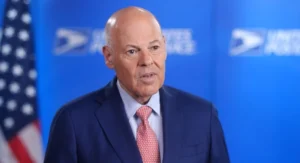Curious About Limited Minted Coins? Lear Capital’s Comprehensive Primer Explains All
By TIMEOFINFO
January 24, 2024
Update on : January 24, 2024

Some investors aren’t aware that certain limited-mintage coins are eligible for inclusion in a self-directed precious metals individual retirement account — or what they can potentially gain from purchasing them, says Kevin DeMeritt, founder and chairman of precious metals firm Lear Capital.
Understanding the differences between the three general categories of coins — bullion, premium and limited-mintage — and what elements make coins valuable is key.
Bullion coins are typically produced by government-operated mints in countries around the world with an investment purpose, featuring a certain precious metal content and purity guarantee.
Premium coins are rare types of coins that were minted before 1933 and cannot be reproduced. Their precious metal content and limited availability help imbue the coins with value. The price of a Morgan Silver Dollar that was issued in 1878, for instance — a variant of a coin that has a 90% silver composition and was struck in Philadelphia, New Orleans, Carson City, Nevada, and San Francisco over a 26-year period — rose from $900 in mid-2018 to approximately $1,300 by Nov. 1, 2023, according to data from the Professional Coin Grading Service, a third-party coin authentication provider.
Much like premium coins, limited-mintage coins — created with a design that changes after a given production run or year — draw value from both their precious metal composition and constrained availability. They can be issued in a predetermined quantity; once that amount has been produced, or the year ends, that particular design may be retired.
Limited-mintage coins have historically retained value well, with prices at times increasing for some. For example, a proof coin version of the Silver American Eagle coin — produced in specific quantities, double-struck for enhanced brilliance, packaged in a protective container and sold with a certificate of authenticity — that was minted in 1986 was trading at $119 as of Nov. 28, 2023. That price is roughly 45% higher than the coin’s price five years ago, $82.
Limited-Mintage Coins’ Charisma
With a value derived from their robust precious metal content and reduced availability, limited-mintage coins can appeal to a dual audience of investors and coin collectors.
Over the years, rising precious metal prices have helped spark interest among investors who were looking to own more gold and other items. National Mining Association records show gold prices escalated a significant amount between 2000 and 2016, climbing 348% during the 16-year period, and they’ve continued to rise since. As of Nov. 27, 2023, gold prices were approximately 63% higher than their 2016 level.
Even during economic downturns, gold coins have experienced value increases. From 1981 to 1989, although the U.S. had undergone a recession and a stock market crash, the CU 3000 Rare Coin index, compiled by the PCGS, surged 660% higher.
Conditions such as precious metal supply and mintage constraints can help heighten the demand and premiums for limited-mintage coins. When supply issues affected mint production capabilities during the COVID-19 pandemic, Kevin DeMeritt says the $2.50 surplus you might normally pay over the spot price of silver for a 1-ounce American Eagle coin shot up to $14 or $15.
“If you already owned one of those silver American Eagles, and the price of the silver didn’t go up at all, you could have turned around and sold that coin, [which] you paid $2.50 over the spot price for, [at] $14 or $15 over the spot price — even though the metal’s price didn’t move at all,” he says. “If they have these limited mintages and an increase in demand [occurs], you not only get the price of silver moving up, the premium can move up, because there’s just not enough of them out there — and you’ll get this double-play profitability.”
While investors are sometimes interested in gold because it’s perceived to be a less volatile asset than some other options, Kevin DeMeritt says that doesn’t mean the metal will always provide lackluster returns.
A $1,000 purchase of a collection of mint state gold coins in 1970, according to Lear Capital data, would today be worth more than $105,000; the average return for the Dow Jones Industrial index during the same time period, however, equates to notably less — roughly $18,300.
“Gold, in certain times, has outproduced the stock market,” Kevin DeMeritt says. “No one really talks about it. The misconception that gold can’t produce profits for people and it’s just more of a safety-type asset is completely incorrect.”
A Growing Market
Limited-mintage coins’ precious metal content, coupled with their restricted production, continue to help make the coins a popular choice — as evidenced by the reportedly passionate response to Royal Australian Mint’s Nov. 23, 2023, release of a coin commemorating Queen Elizabeth II, potentially the last the queen will be featured on.
Within a week, prices for the coin, which is being offered in quantities of 25,000 uncirculated and 7,500 silver proof versions for 15 Australian dollars and AU$135, respectively, reached more than AU$400 on eBay, according to news.com.au.
Other highly anticipated recent coin releases include Lear Capital’s Shrine of Democracy coin series, which debuted in October.
The four coin designs feature the former U.S. presidents who are represented on the Mount Rushmore National Memorial in South Dakota. The series is being produced in limited quantities of 300,000 1.5-ounce silver coins, which possess a 0.999 composition, and 30,000 0.25-ounce gold coins that have a fineness of 0.9999.
The Shrine of Democracy series represents Lear Capital’s belief in the principles and values of the United States, and the company’s reverence for the accomplishments the four presidents who are pictured on the coins achieved, according to John Ohanesian, CEO of Lear Capital.
“We wanted to create something of inherent value with the gold and silver coins, but also something that reflects the nation’s rich history and great leaders,” Ohanesian said in a press release about the first design’s release.
What the Future May Hold
Limited-mintage coins’ reduced availability will likely continue to captivate collectors; next year, if interest rates remain elevated in the U.S. and the possibility of a recession is still a concern, limited-mintage and other coin sales could potentially get a boost from investor interest in purchasing precious metals as a way to diversify their portfolio and hopefully help offset other asset losses.
In 2022, as conflicts such as the war between Russia and Ukraine reverberated throughout the global economy, central bank demand for gold increased, eventually reaching its highest level since 1950.
Amid stubbornly high inflation and rising interest rates, the annual global investment in precious metal coins and bars also grew by 10% last year, according to the World Gold Council.
In the coming months, Kevin DeMeritt says, economic uncertainty could significantly influence investors’ interest in gold coins and other precious metal asset purchases.
“Gold is used as a safe haven during recessions, market volatility, war,” the Lear Capital founder says. “When investors are worried about the economy, usually you get more people turning to gold. That can drive up its price — and we’re starting to see that more and more.”
Read more: Curious About Limited Minted Coins? Lear Capital’s Comprehensive Primer Explains All















